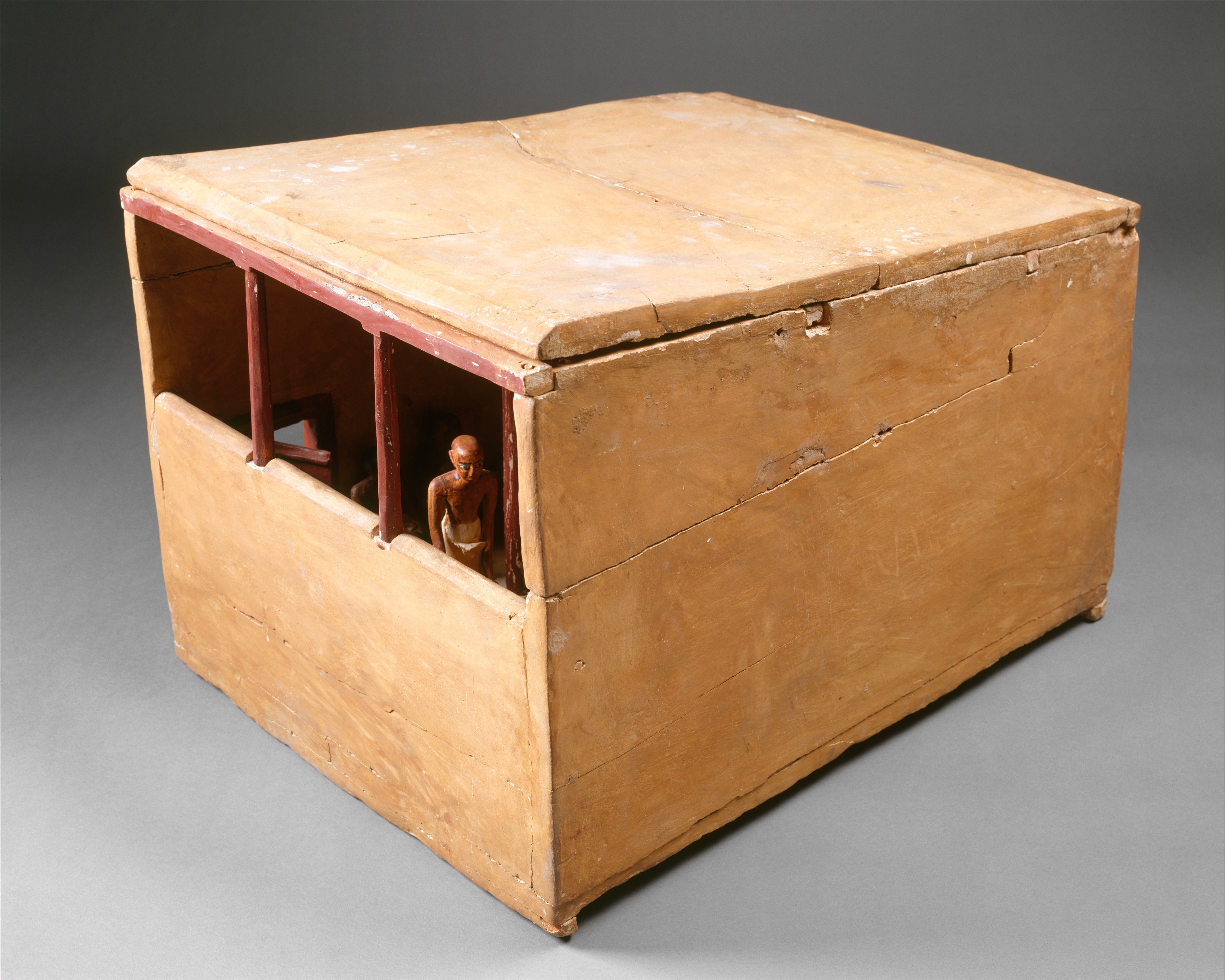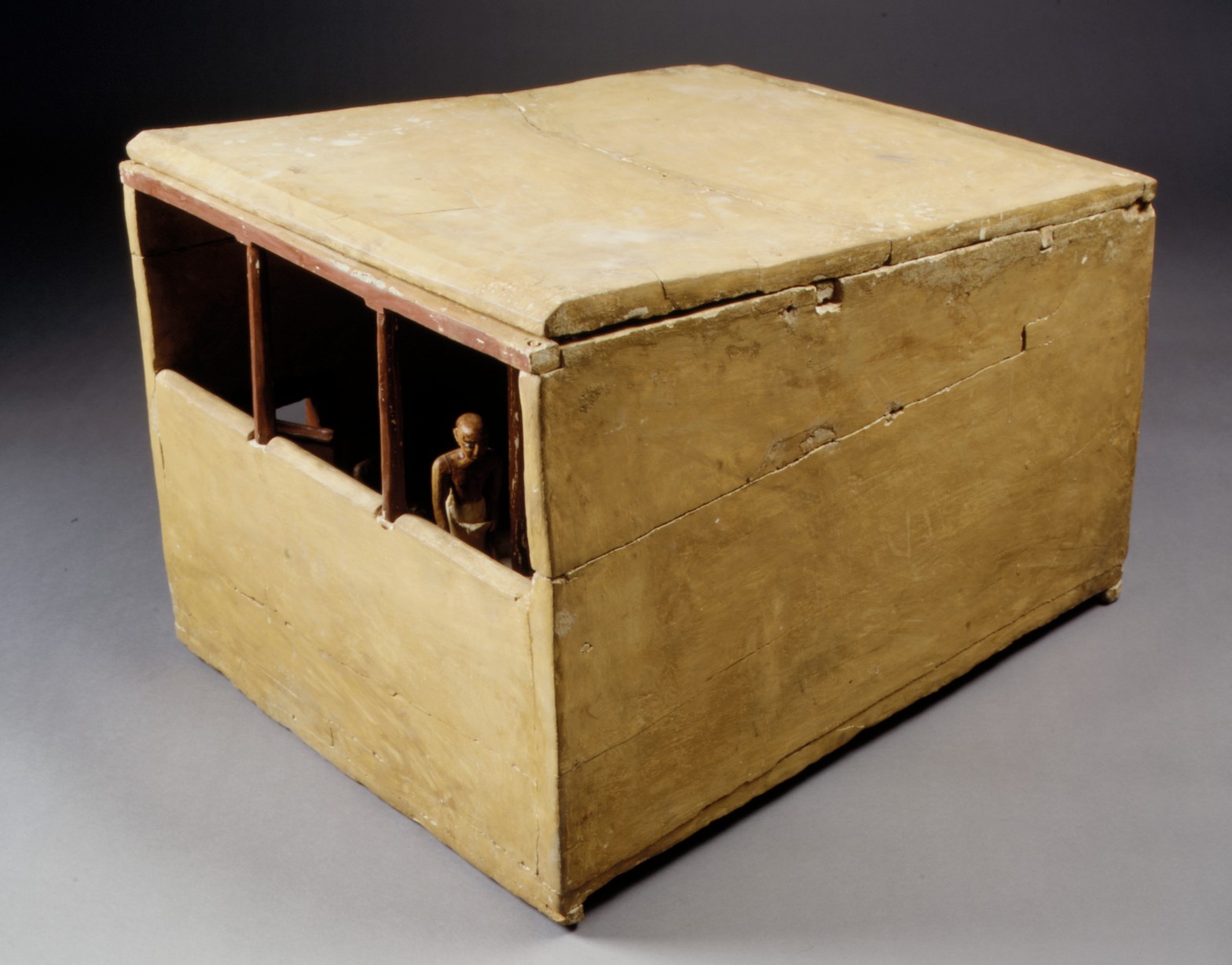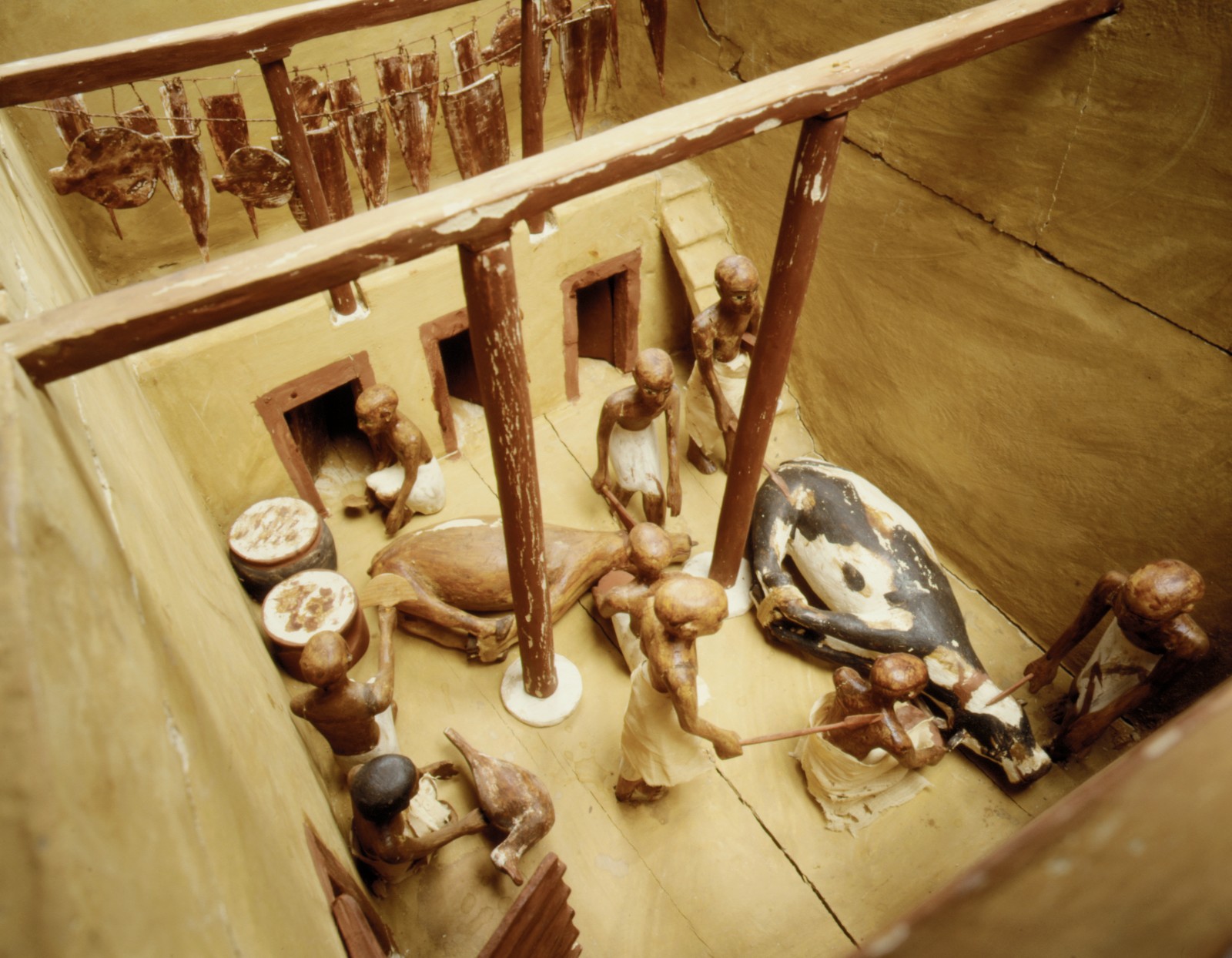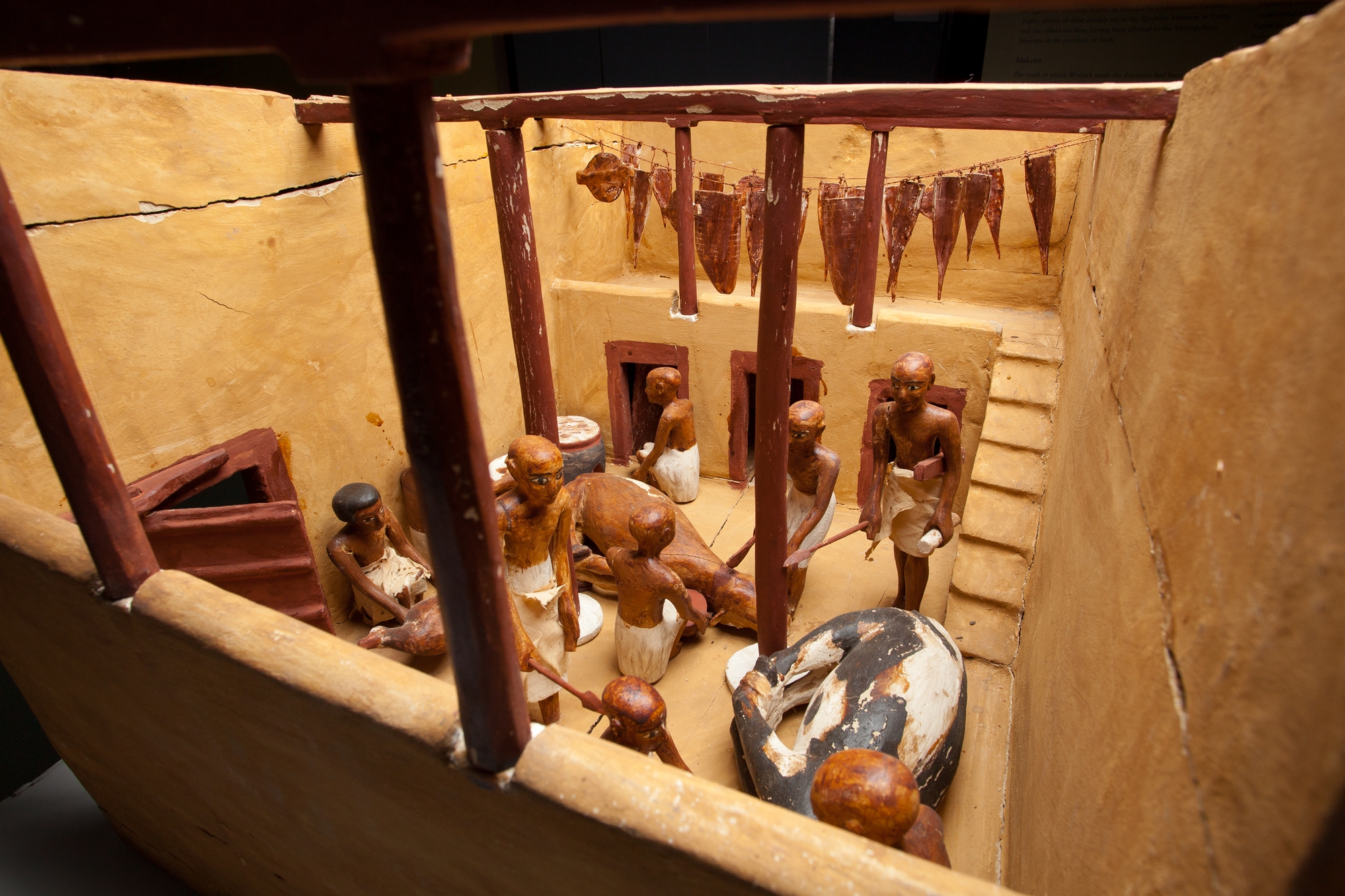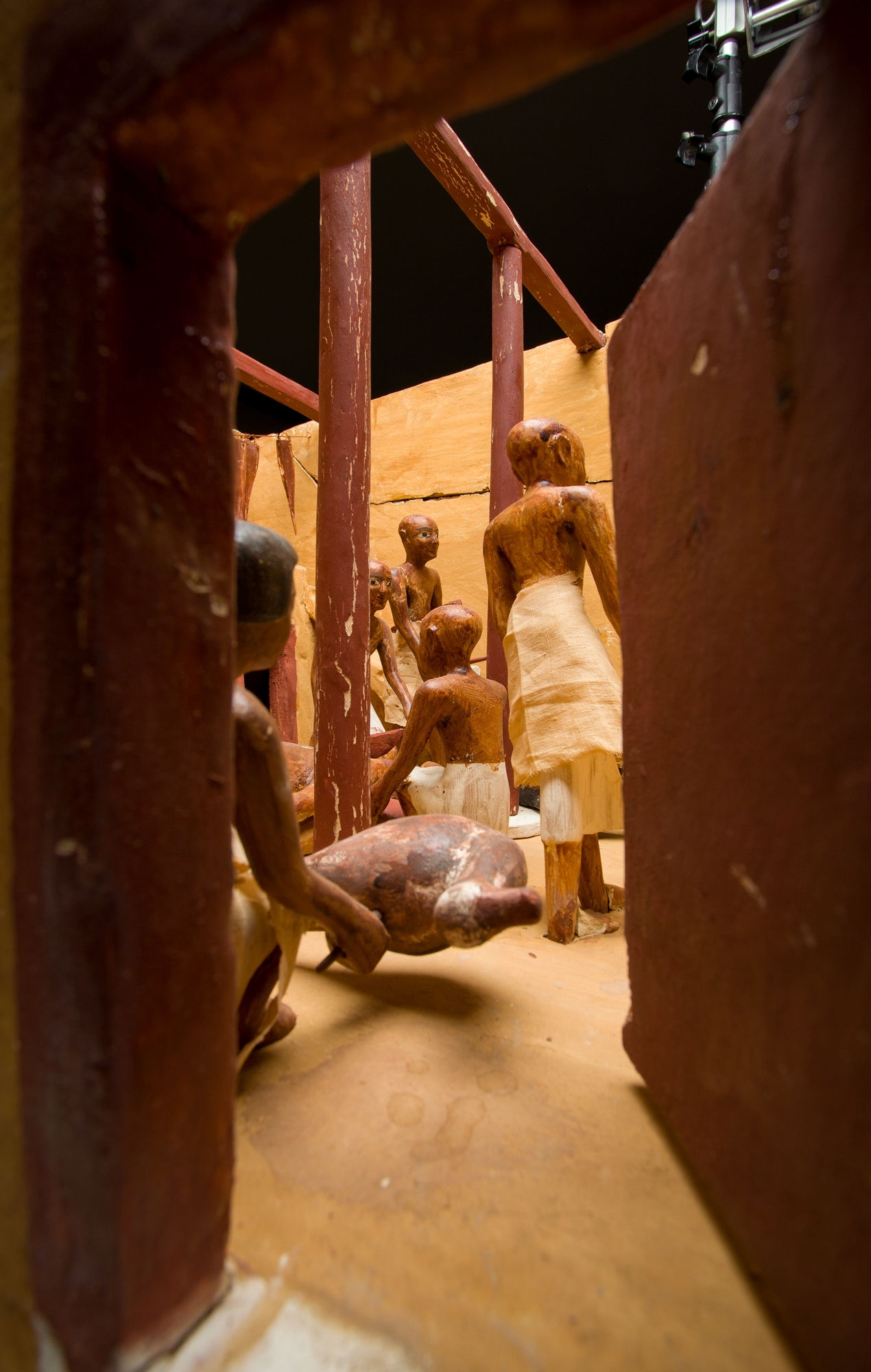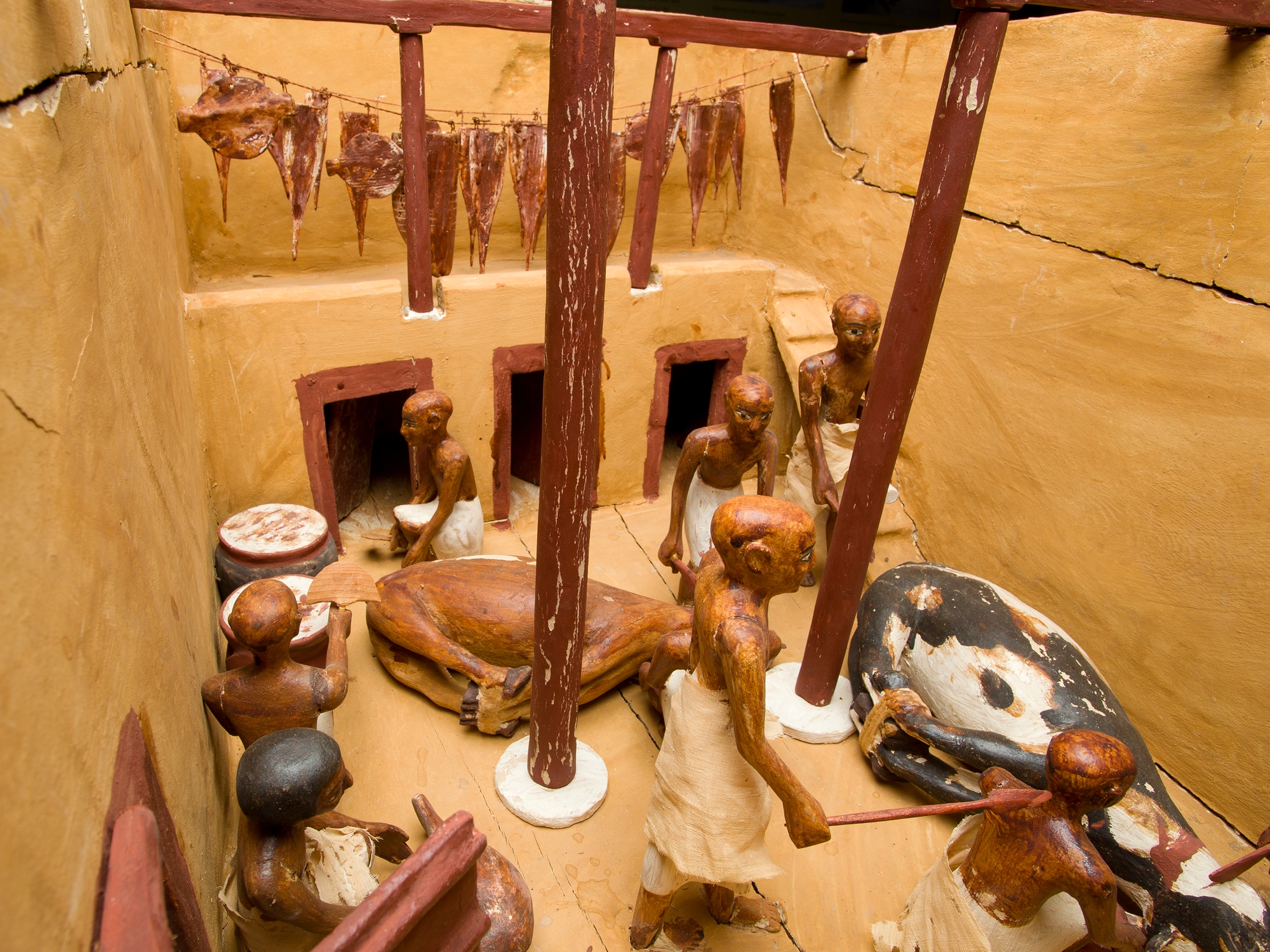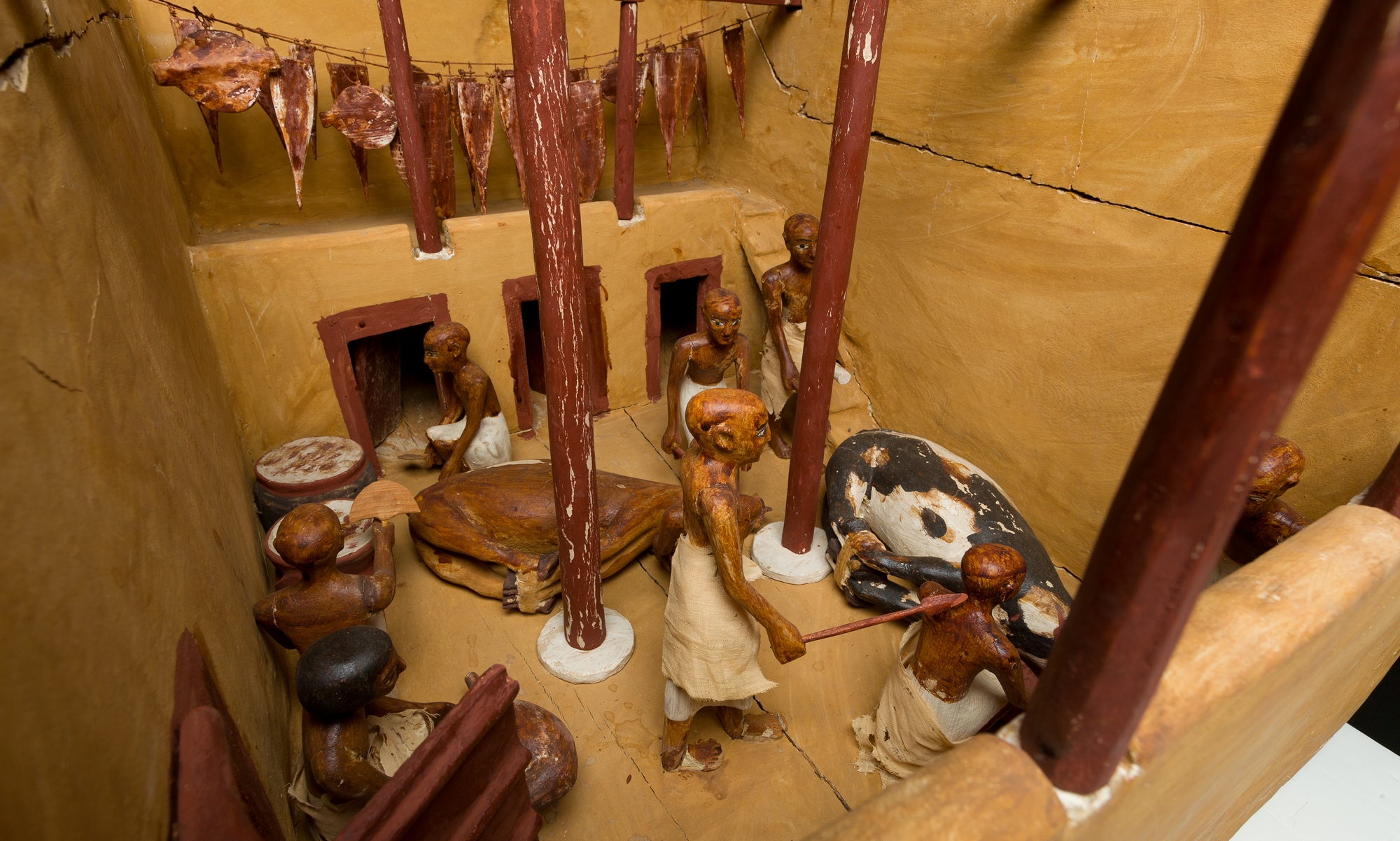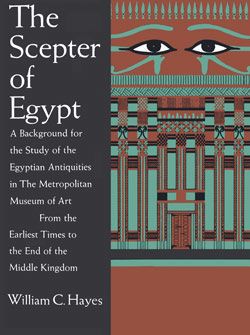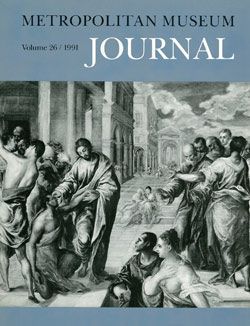Model of a Slaughter House
Middle Kingdom
This model of a meat processing installation was found with twenty three other models of boats, gardens, and workshops in a hidden chamber at the side of the passage leading into the rock cut tomb of the royal chief steward Meketre, who began his career under King Nebhepetre Mentuhotep II of Dynasty 11 and continued to serve successive kings into the early years of Dynasty 12.
Two oxen are being slaughtered in the large hall. Their legs have been trussed together and two men are cutting their throats. Opposite these men, two others hold bowls to catch the blood which will be made into pudding by the men in the corner fanning fires under kettles. An overseer and a clerk, holding batons, superintend the slaughtering and the plucking of a goose. On the balcony above hang joints of meat. The cords holding joints of meat have been restored.
All the accessible rooms in the tomb of Meketre had been robbed and plundered already during Antiquity; but early in 1920 the Museum's excavator, Herbert Winlock, wanted to obtain an accurate floor plan of the tomb's layout for his map of the Eleventh Dynasty necropolis at Thebes and, therefore, had his workmen clean out the accumulated debris. It was during this cleaning operation that the small hidden chamber was discovered, filled with twenty-four almost perfectly preserved models. Eventually, half of these went to the Egyptian Museum, Cairo, and the other half came to the Metropolitan Museum in the partition of finds.
Link to a blog about ancient architectural models
Modeling the World: Ancient Architectural Models Now on View
Due to rights restrictions, this image cannot be enlarged, viewed at full screen, or downloaded.
This artwork is meant to be viewed from right to left. Scroll left to view more.


